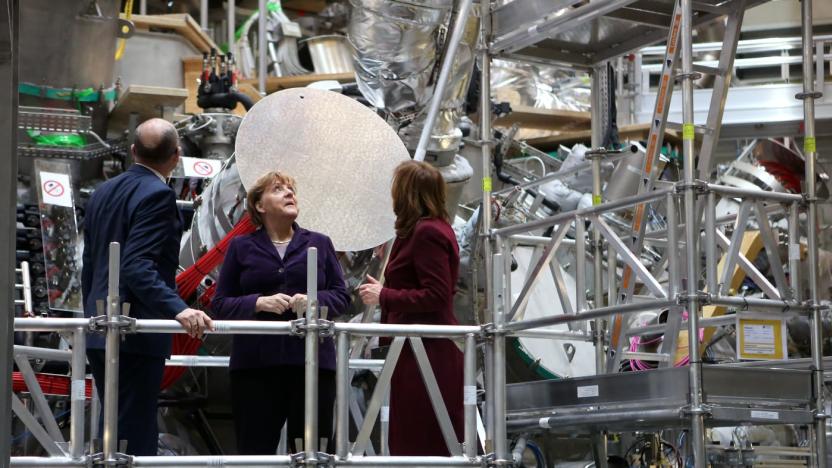stellarator
Latest

Scientists confirm twisty fusion device's odd magnetic fields
Now that the first large version of a extraordinarily complex, cruller-shaped stellarator fusion device is up and running, there's an overriding question: is it behaving the way scientists expected? Thankfully, the answer is yes. Researchers have confirmed that Germany's Wendelstein 7-X stellarator is producing the 3D magnetic fields that were anticipated from its twisty design. In fact, it's faithful to the concept with "unprecedented accuracy" -- the error rate is less than one in 100,000.

Twisty fusion reactor goes online after 19 years of work
Germany just took fusion power one big, important step forward. The country's Max Planck Institute for Plasma Physics has just switched on Wendelstein 7-X, the first large fusion reactor based on a twisty stellarator design. It's only producing hydrogen plasma at the moment and won't actually generate energy, but power isn't really the point. Instead, it'll serve as proof that stellarators could provide energy while operating continuously, unlike current (tokamak-based) fusion reactors that operate in short pulses. They should be safer, too.

Twisty reactor hints at a future of practical fusion power
Many fusion reactors are based on a tokamak design, which uses an electrical current to twist a superheated plasma's electrons and ions into a three-dimensional loop. That's good for containing the plasma, but it's still not the safest design -- if the current fails or there's a magnetic disruption, you have a serious problem on your hands. However, scientists at the Max Planck Institute may have a more practical alternative. They've recently completed Wendelstein 7-X, the first large reactor based on a stellarator concept that relies on a cruller-like shape for the twisting action instead of a current. That's considerably safer than a tokamak, and the supercomputer-guided design should iron out the containment problems that have plagued stellarators until now.
